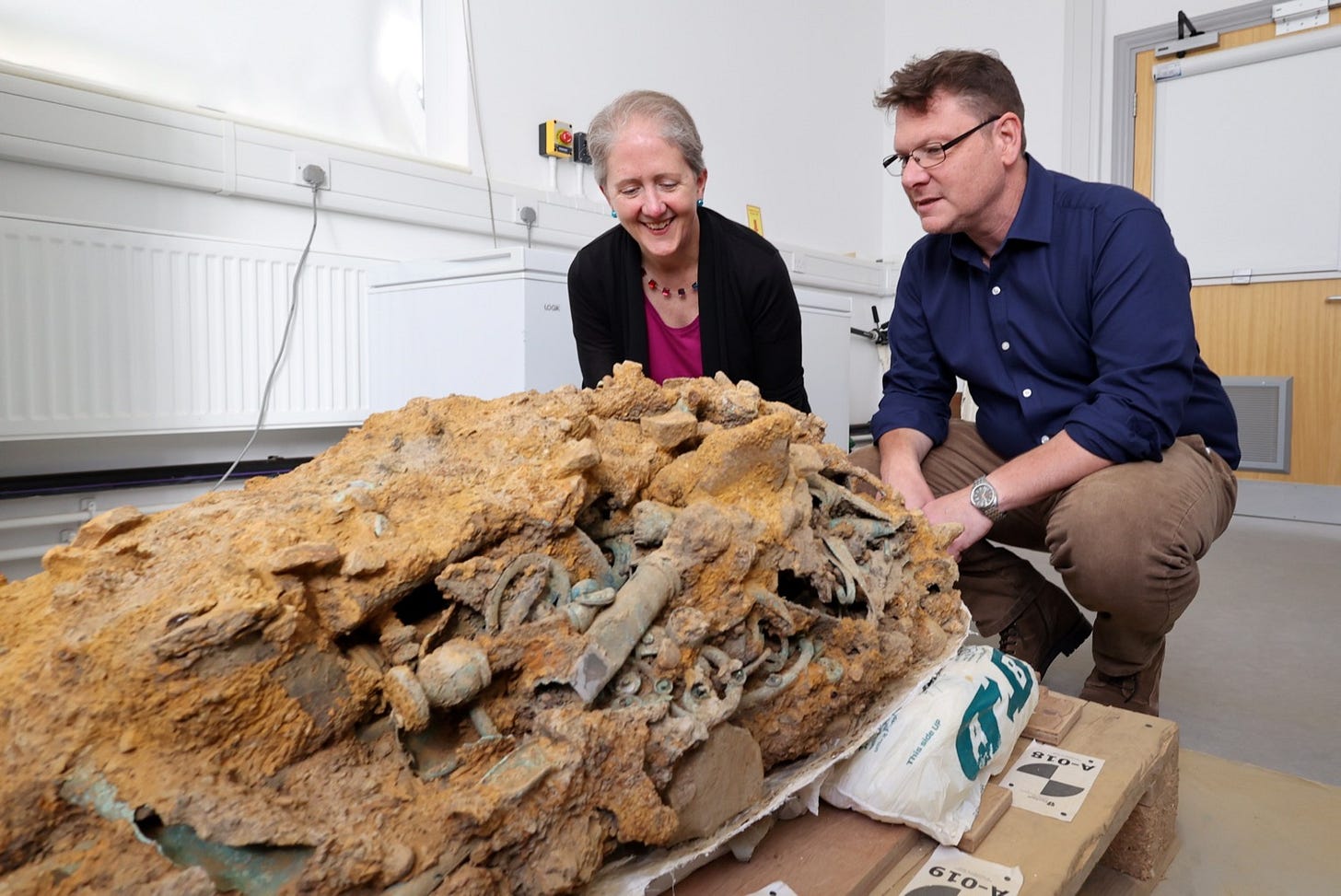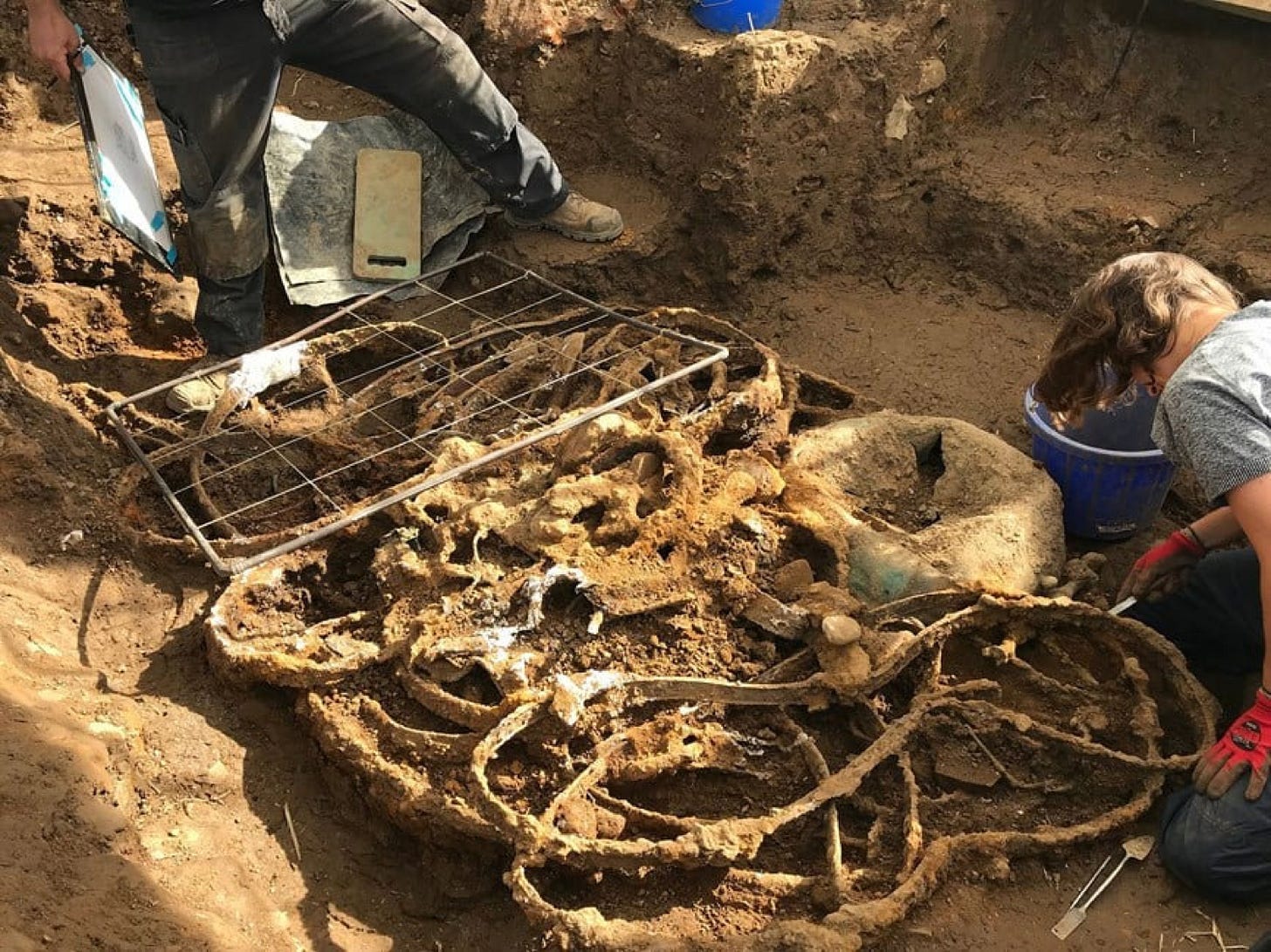Largest Iron Age hoard found in UK enters next chapter
New home for spectacular hoard which opens window on to Iron Age life in the North. Tony Henderson reports.

A vast hoard of Iron Age objects buried 2,000 years ago is set to leave Durham University this week after two years of research work by experts.
In 2021, metal detectorist Peter Heads came across the first evidence of what would prove to be almost 900 items in Melsonby, North Yorkshire, and alerted Durham University Professor of Archaeology Tom Moore, whom he knew from the academic’s previous studies in the area.
That sparked excavations by a team of archaeologists from Durham University led by Prof Moore, with £120,000 support from Historic England and advice from the British Museum.
Hoard burials were retrieved from two locations near each other and included items ranging from parts of at least seven vehicles such as chariots and wagons, horse harness pieces and spearheads, to a wine-mixing bowl, two ornate cauldrons, an iron mirror and personal adornments.
It is the largest hoard of Iron Age metalwork found in the UK. The site is located near the large ramparted power base at Stanwick – 10 miles from Darlington – of the Brigantes tribe, whose territory stretched across Yorkshire and County Durham.
Now the hoard will be going back to Yorkshire after being acquired by the Yorkshire Museum, which received £192,096 from the National Heritage Memorial Fund alongside support from public fundraising.
Research into the array of items by Durham University and the museum in York will continue for several years. “There is so much material that we are really at the beginning of our research,” said Prof Moore.
The vehicles and harnesses were dismantled by their Iron Age owners before being deposited in the ground. A total of 28 iron tyres and enough harness pieces for at least 14 ponies were found.
“The objects were the best of the best. They are highly decorated and the brass, glass, enamel and coral decorative additions would have been shining,” said Prof Moore.
“They have been delicately made and show the quality of the craftsmanship which was present in northern England. They are beautiful objects.”
Coral imported from the Mediterranean indicates a community with international connections.
It is thought that the items may have been buried by various groups as a commemorative or funeral event for a high-status individual.
Around 80 objects are still encased in a block of earth 1.4 metres long which was lifted from the site and taken to Durham.
Scans show that the objects were probably wrapped in textile bundles and have become meshed together inside the block.
A decision will be made on whether to attempt to extract the objects or leave the block intact for display to show how it was discovered in the ground.
What is an archaeological time capsule was buried in the first century, probably just before the arrival of the Romans in northern England.
Dr Andrew Woods, head of research and collections at York Museums Trust, said: “The Yorkshire Museum will work in partnership to undertake a careful programme of conservation to reveal more of the hoard’s beauty and to keep it protected for future generations.
“There will also be a research project to understand the stories of creation and deposition. Over the coming years the hoard will be put on display, and we cannot wait to share it with our visitors.”




